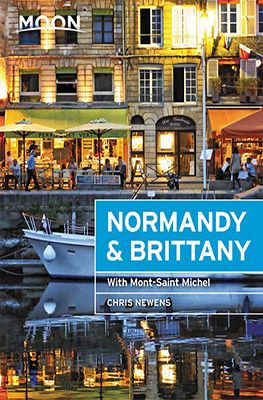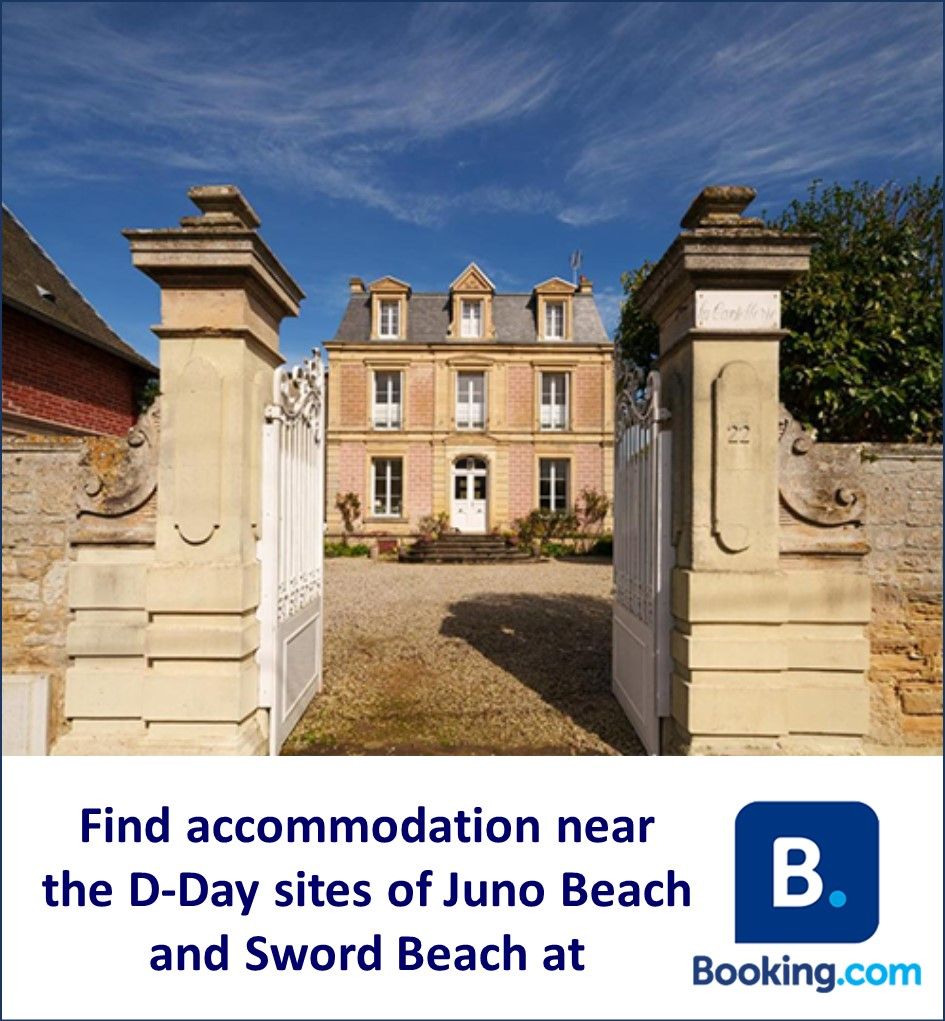The coastal villages of Graye-sur-Mer, Courseulles-sur-Mer, Bernières-sur-Mer, and Saint-Aubin-sur-Mer were the area with the codename Juno Beach in June 1944. Further to the east were the towns of Merville and Ouistreham, situated in the area that received the codename Sword Beach. On 6 June, all these lovely villages turned into a battlefield that had no equal in history. Various sights of D-Day at Juno Beach and Sword Beach serve as reminders of D-Day and the Battle of Normandy. Join us on a journey to discover the most interesting.
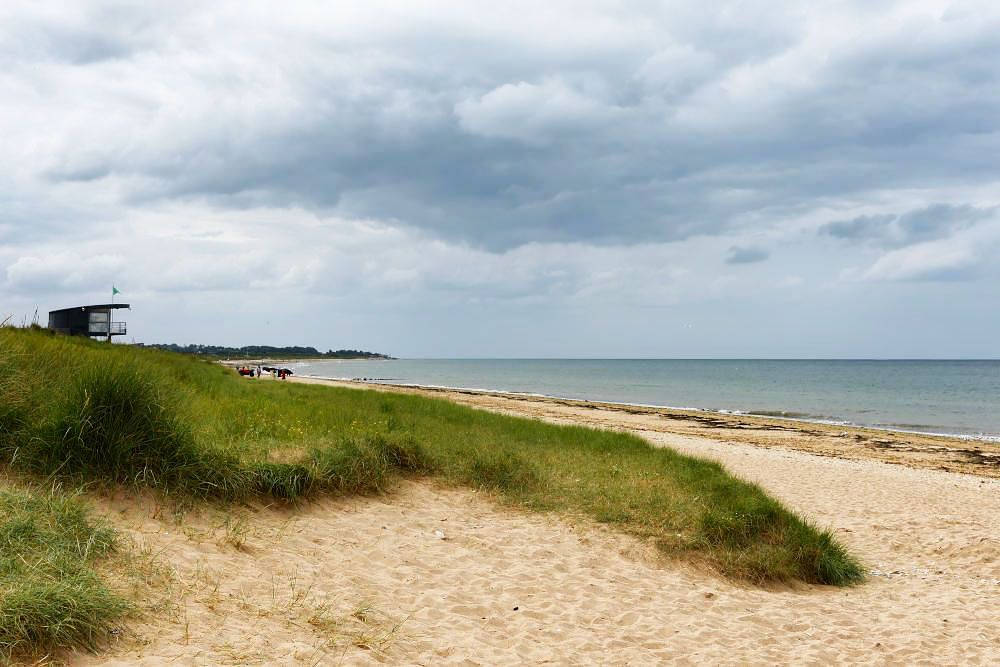
Juno Beach and D-Day
Juno Beach had a large number of German gun batteries, making it the second most heavily defended beach after Omaha Beach. The Allies bombarded several positions the night before D-Day, but unfortunately, they were not completely disabled. Consequently, the fighting after the landing operation was intense. Nonetheless, Canadian troops managed to conquer the beach around midday. They quickly advanced inland, successfully capturing several bridges. Consequently, by the end of the day, the Canadian troops had advanced the farthest of all the Allied landing forces. They quickly established contact with the British soldiers executing the invasion at Sword Beach.
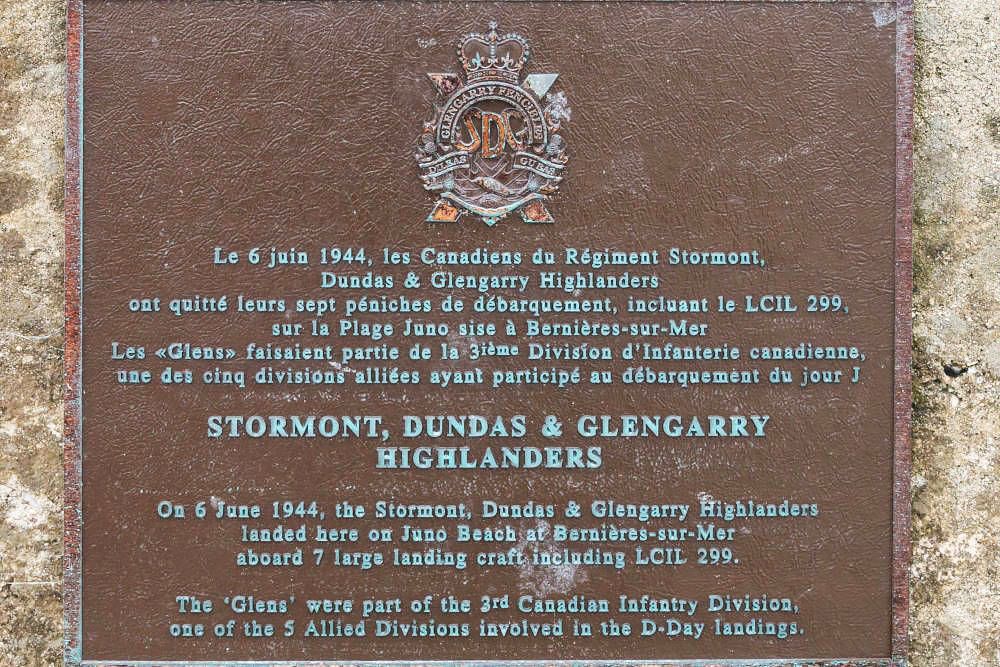
D-Day sites at Juno Beach
These are the main locations you can visit at Juno Beach or slightly further inland:
Juno Beach Centre
Situated on the beach of Juno Beach, the Juno Beach Centre is the only Canadian museum on the D-Day landing beaches. The modern building is entirely dedicated to commemorating the Canadian contribution to World War II, with a special focus on the events at Juno Beach during D-Day. The museum was established in honor of the Canadian forces that participated in the Normandy invasion. The museum hosts extensive exhibitions featuring items, photographs, documents, and personal stories of soldiers. The impressive 12-minute film “They walk with you” highlights the experiences of Canadians during D-Day.
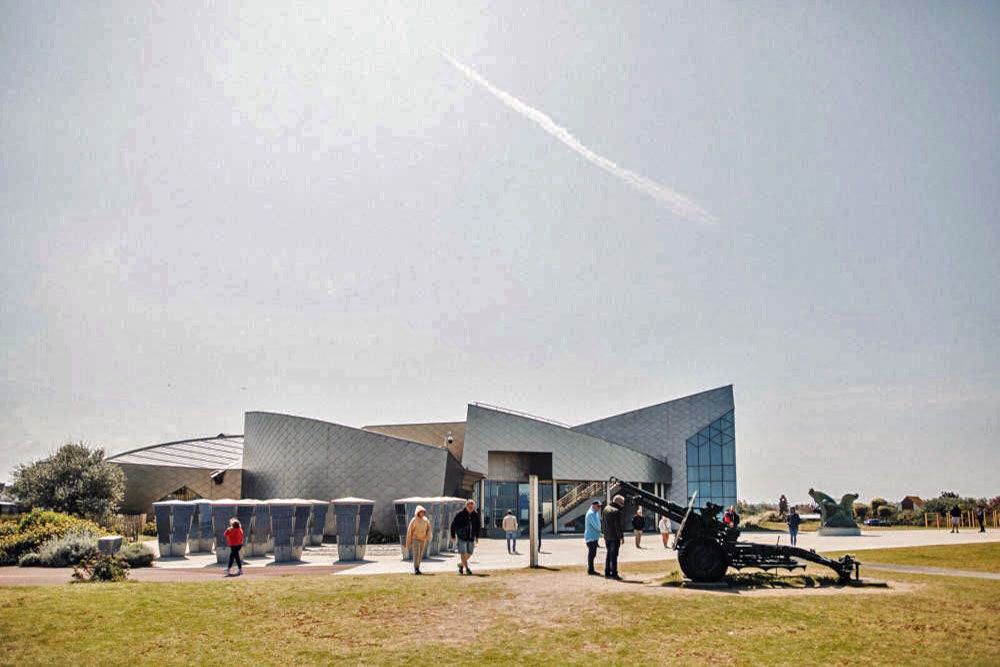
Juno Park
The Juno Park surrounds the museum and is free to visit, offering an interesting place for a walk. One of the attractions in the park is the remains of a large German defensive stronghold where heavy fighting took place during D-Day.
To fully understand the history, guided walks through the park are available. During this 45-minute tour, Canadian guides provide detailed information about Juno Beach. An added benefit is that only during the guided tour do you have access to the German command post and the observation bunker. When visiting the park independently, panels at various points provide background information.
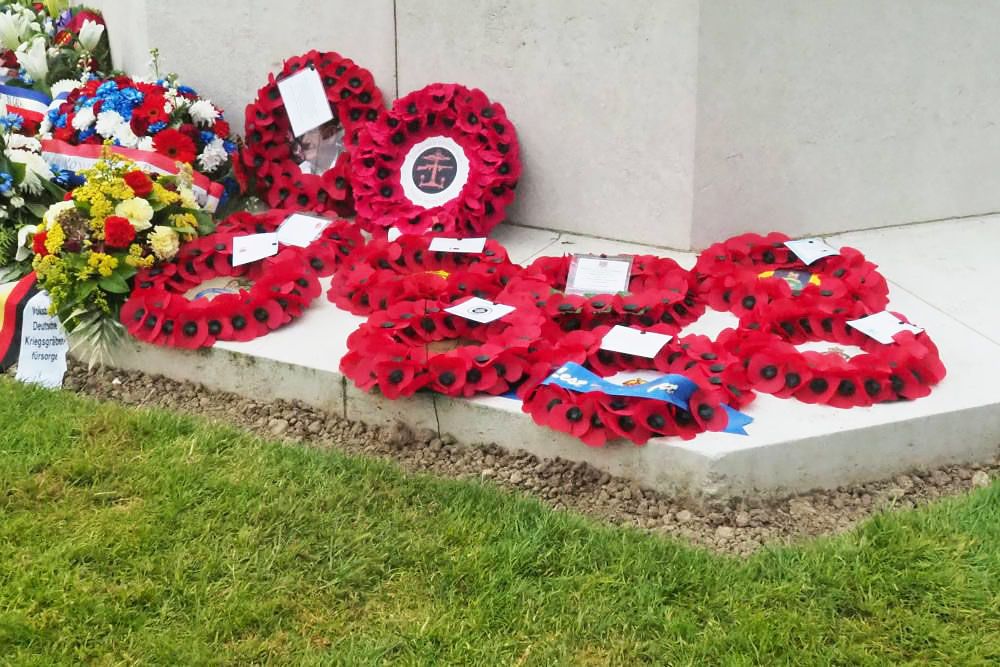
Maison des Canadiens (House of the Canadians)
The Maison des Canadiens, or “La Maison des Canadiens,” was the first house in Normandy to be liberated by the Allies during D-Day. This early 20th-century villa was stormed by Canadian soldiers on 6 June 1944, with strict orders not to destroy it, as the house served as a good reference point for landing ships and was marked on all maps. Today, the Maison des Canadiens in Bernières-sur-Mer is a museum commemorating the Canadian liberation of Normandy, displaying photos, documents, and other objects from World War II. In the garden, there is a monument in remembrance of the fallen Canadian soldiers in Bernières-sur-Mer. Admission to the Maison des Canadiens is free.
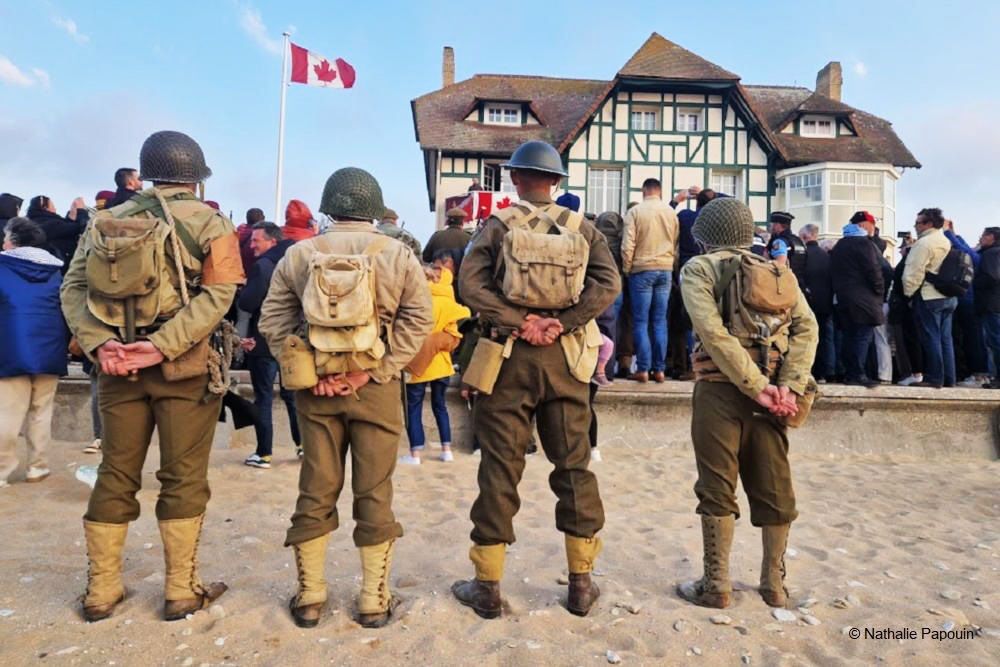
Mémorial des civils dans la Guerre in Falaise
Falaise, inland in Normandy, was the scene of a decisive defeat for the Germans. The “Falaise Pocket” was an encirclement operation between Falaise and Argentan. Allied forces managed to isolate and enclose German military forces, resulting in one of the greatest defeats for the German army. This paved the way for further advances by the liberators.
The Falaise Museum sheds light on a lesser-known aspect of D-Day and the Battle of Normandy, displaying the enormous impact of the war on civilians. The museum provides a unique insight into the terrible experiences of the civilian population, focusing on topics such as evacuation, food shortages, resistance, and collaboration. Particularly striking is a compelling film about the bombings on Falaise, which vividly portrays the fear and panic experienced by the inhabitants during the bombardments.
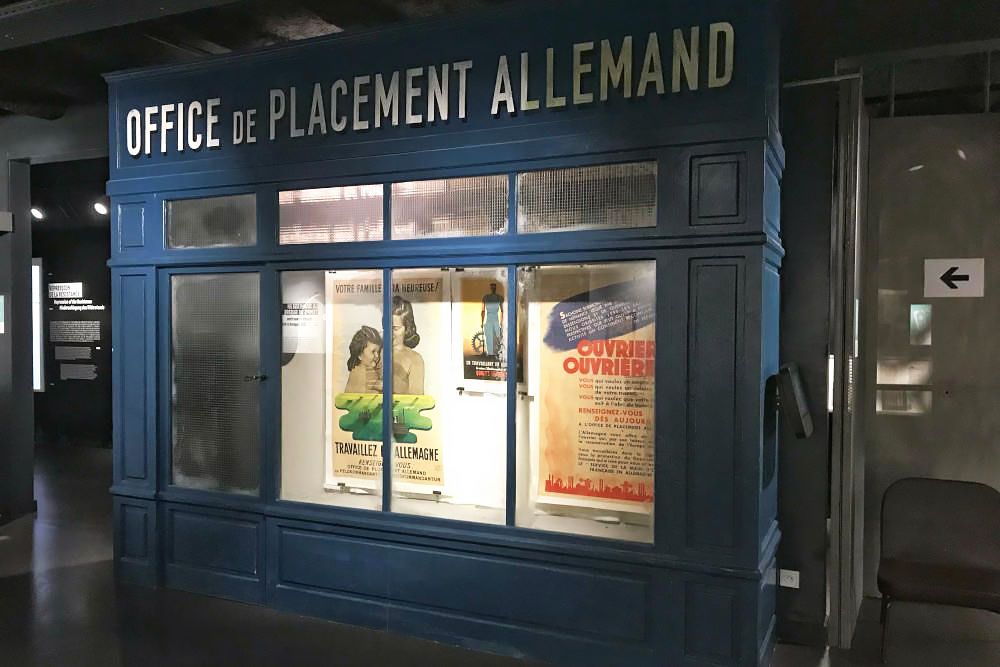
Sword Beach during D-Day
Sword Beach was the most easterly landing beach at the start of Operation Overlord. It was the British troops who landed there near Ouistreham. The combat zone was approximately 15 kilometers from Caen. The objective was to reach this city as quickly as possible, as Caen was a major traffic hub with important roads leading inland in all directions.
The German defense consisted of several components. The Merville Battery was to play a crucial role. With the cannons positioned there, the enemy had a wide range. However, prior to the invasion, British troops had been able to disable the battery in Merville through a surprise attack, significantly weakening the defense. Consequently, resistance during the landing was limited. Within an hour, the troops could advance inland. Despite the seemingly smooth progress, Caen was not reached. The advance halted a few kilometers before the city. Due to German regrouping and continued resistance, this lasted much longer than hoped. Relentless bombardments devastated the entire city center of Caen, but the resistance held firm. It wasn’t until July 9th that Caen fell into the hands of the Allies, giving them control over the roads and railways near the city, enabling further advancement in France.
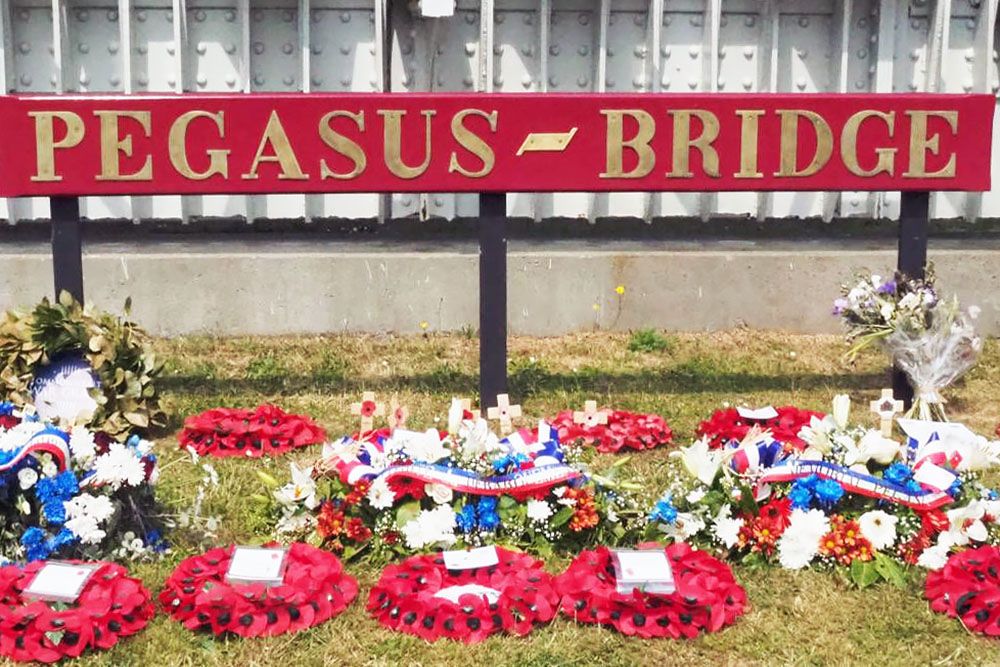
D-Day landmarks at Sword Beach
These are the main sites at Sword Beach:
Musée Mémorial Pegasus in Ranville
Before D-Day began, British airborne troops carried out a daring operation using large gliders. They aimed to capture two strategic bridges, crucial for the Allies’ further advance. They sought to prevent the Germans from blowing up these bridges once D-Day had begun.
The Bénouville bridge over the Caen Canal was the first target. The subsequent task was to capture the bridge over the River Orne, located over 300 meters away. Around midnight, six massive gliders landed with six platoons near the bridge. The total capture was rapid: the Germans were subdued within fifteen minutes. The bridges were secured, marking the first success of D-Day. The Allies renamed the Bénouville bridge as Pegasus Bridge, after the emblem of the airborne troops who achieved the conquest.
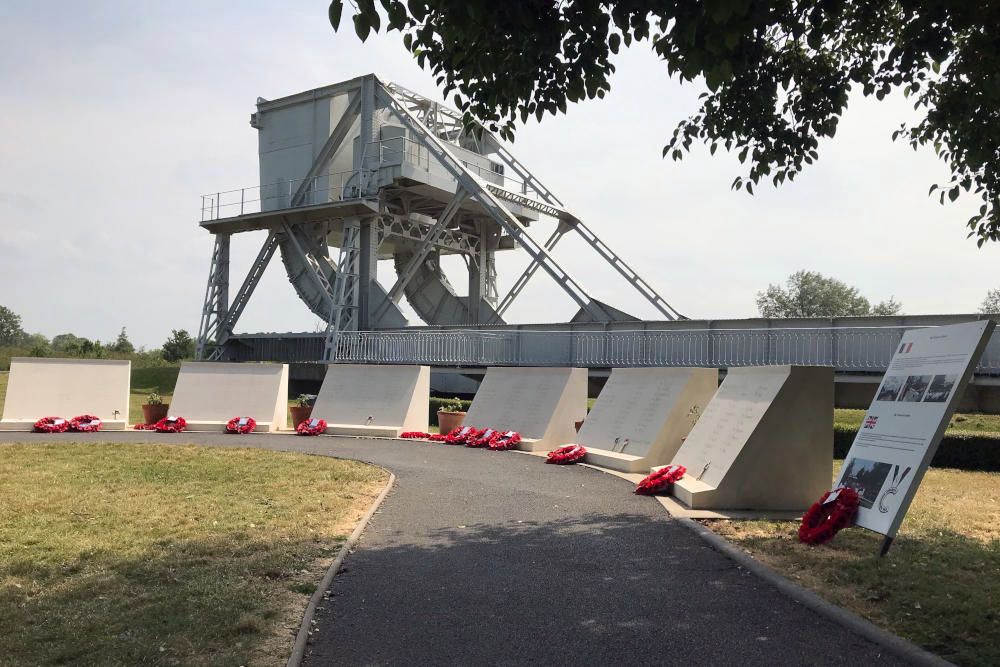
Princess Irene Brigade
During our visit to the Pegasus Museum, we noticed a large number of Dutch soldiers. Like us, they are visiting several remarkable memorial sites around D-Day. Dutch troops did not participate in the invasion but, from August 1944, the Princess Irene Brigade contributed to the Allied advance in France.
In the museum, we were captivated by a film about the capture. It was fantastic to see how a complete surprise attack with those large gliders was successfully executed. Furthermore, the museum displays various items from the 6th Airborne Division, responsible for the attack.
When we stood in the outdoor area, the unique shape of the building became truly apparent. The roof’s design imitates a glider. Shortly after, we came face to face with a Horsa glider. What a behemoth! Of course, a section of the Pegasus Bridge is also present on the premises. In 1984, the original war-time bridge was replaced by a modern version, making the Pegasus Bridge the museum’s centerpiece. Wreaths, laid neatly in formation, were placed by the monuments four days earlier. Dutch soldiers observed a minute of silence to commemorate the heroes of the 6th Airborne Division.
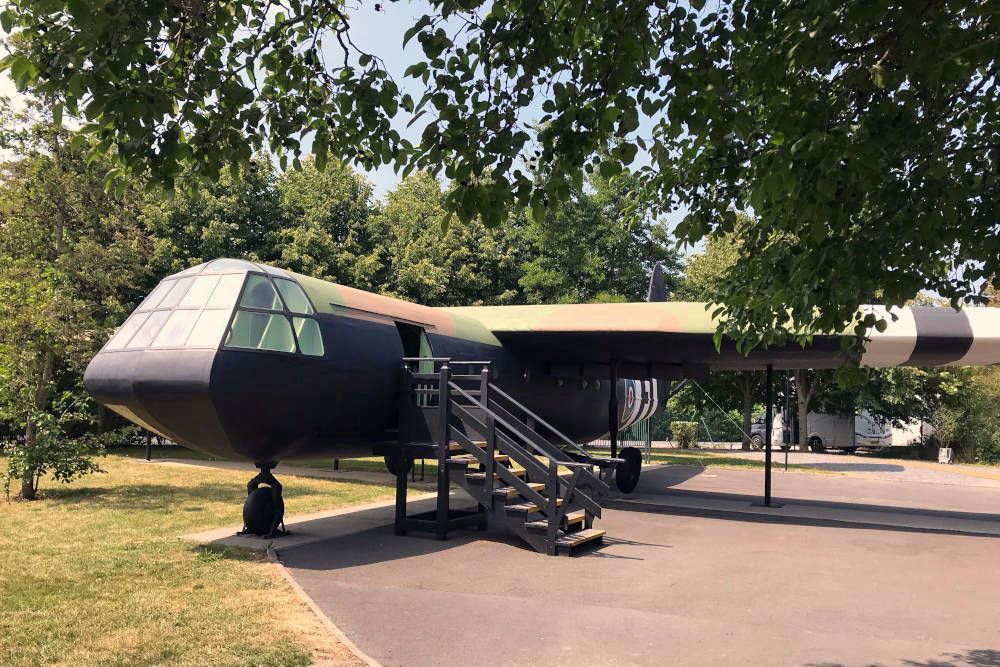
AtlantikWall Museum in Ouistreham
The Atlantikwall was a vast German defensive line along the Atlantic coast. Stretching over 4,000 kilometers from Norway to southern France, it comprised various barriers, including bunkers, trenches, tank obstacles, minefields, and other fortifications, intended to thwart an Allied attack along the Atlantic coast.
Visiting the Atlantikwall Museum in Ouistreham is fascinating. Housed in an original and large German bunker, the museum features perfectly reconstructed interior spaces across five floors. It showcases not only combat and observation posts, but also the radio transmission room, the infirmary, and the armory. The museum also illuminates the development of the Atlantikwall, the largest construction of the 20th century, involving over two million workers. One of the highlights of the museum is the 17-meter-high telemetry post. From this tower, there is a spectacular view over Sword Beach and the sea.
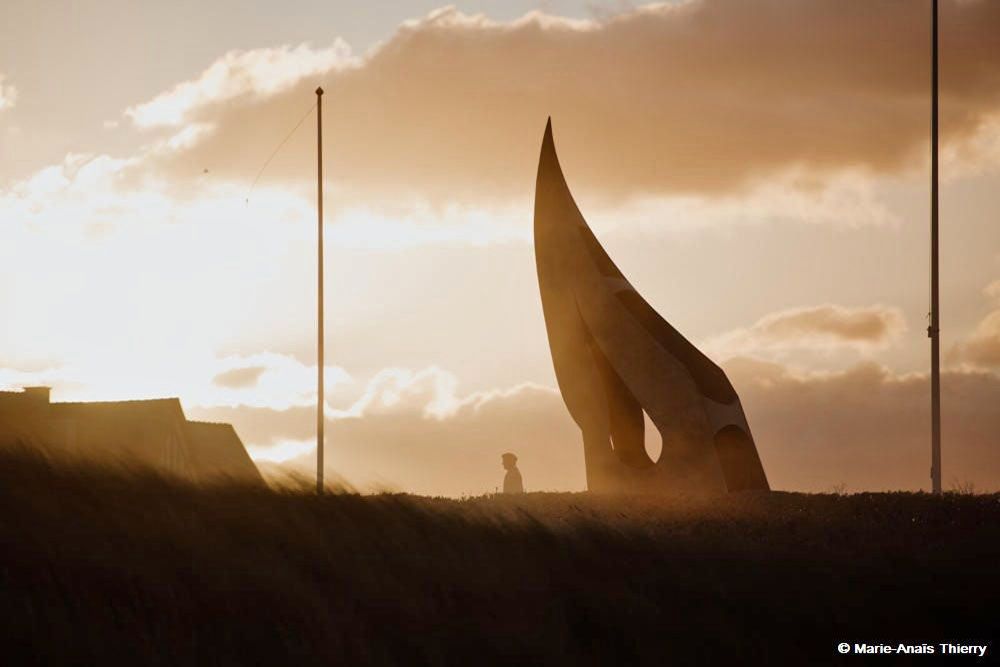
Merville Gun Battery Museum
The Merville Battery was a significant German defensive complex, consisting of four large bunkers overlooking the canal. It was suspected that the bunkers housed large cannons, making this complex one of the key defense works in the Atlantikwall.
The Merville Battery was a target for the Allies on the night before D-Day. Parachutists landed at Merville to capture and disable the battery, which they swiftly achieved. It turned out that the bunkers primarily contained outdated Czech weapons from the First World War. The feared cannons had already been removed.
Visiting the complex is an impressive experience. Through an educational walking route, visitors learn all about this battery. Particularly, a visit to the largest bunker is spectacular. With sounds, images, lights, and scents, visitors experience the bombings on the battery.
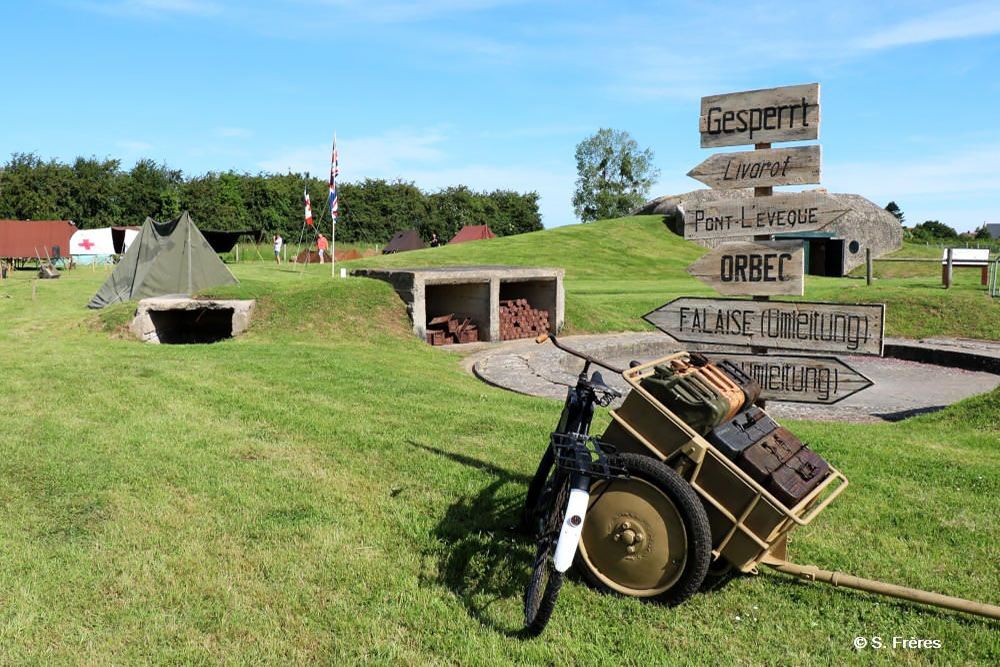
Caen Memorial Museum in Caen
Amid the scars of war in Caen stands the impressive Caen Memorial Museum. A visit to this museum is a crucial starting point for those seeking to understand D-Day. Visitors are immersed in the historical context: the lead-up to the Second World War, the war itself, the preparations for D-Day, the aftermath of the invasion, the period of peace, and the Cold War.
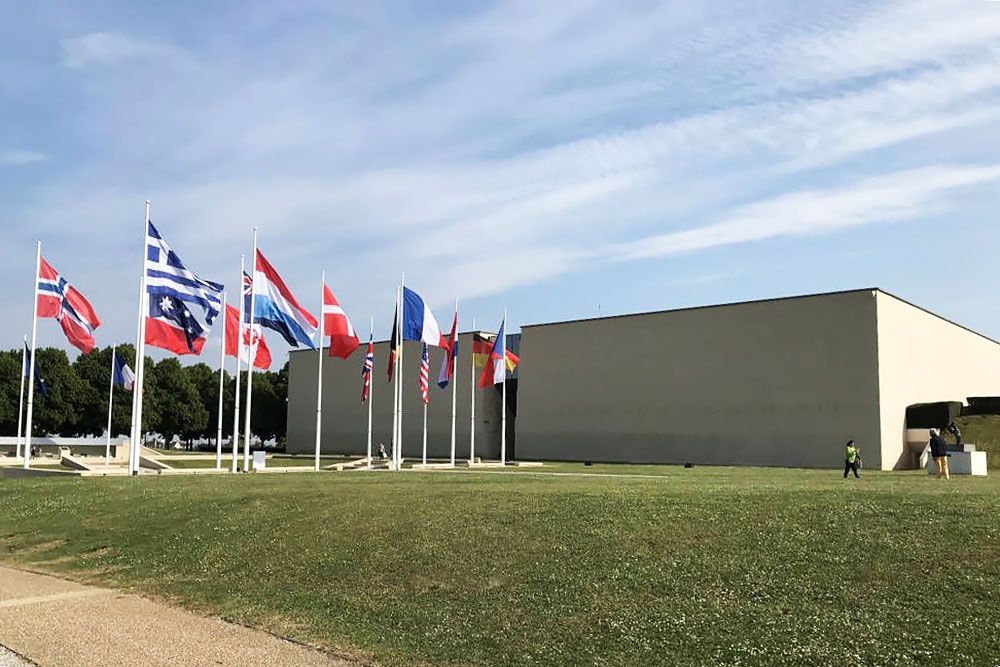
The museum presents the European history of the 20th century and the fragility of peace in an interactive manner. This resonates particularly given the current events in Eastern Europe. The film “Europe, our History” is particularly impressive, as the 360-degree screen brings the images vividly to life. Additionally, the museum hosts a permanent photo exhibition by a French war photographer. Since 1967, he has covered wars and conflicts worldwide, from Vietnam to Ukraine. His photos are a chilling testament to the necessity of cherishing peace, which is never guaranteed. His photographs of the consequences of the “special military operation” in Ukraine are evidence of this.
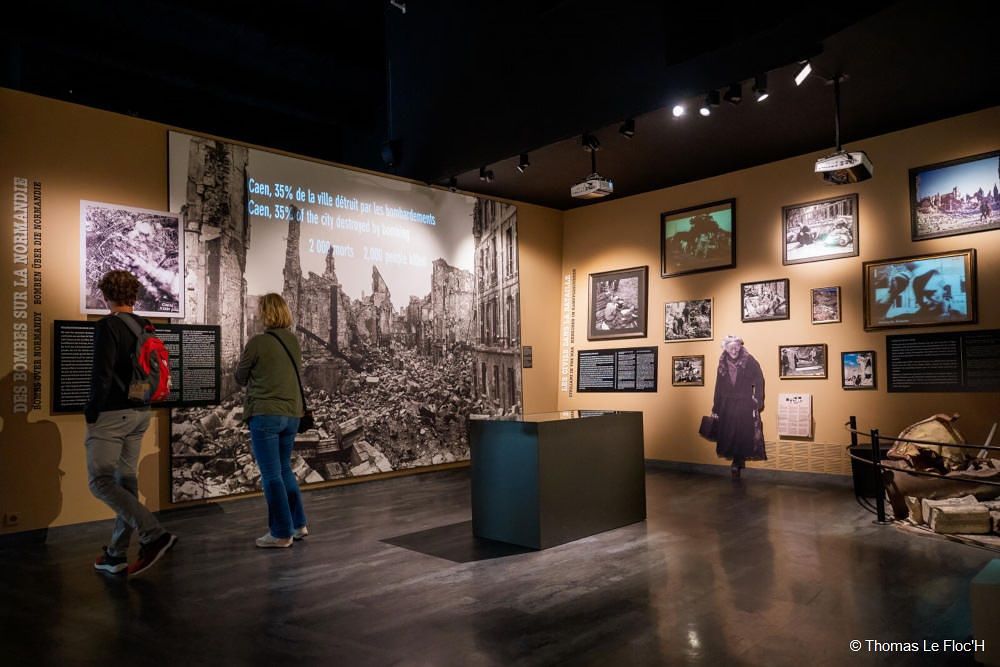
The museum’s collection is impressive, especially in providing the historical context before, during, and after the war. Therefore, we were glad to have visited this museum first. The information we received significantly enhanced our understanding of D-Day and the Battle of Normandy. We therefore recommend that everyone begin a tour of the D-Day landing beaches with a visit to the Caen Memorial Museum. We spent two hours there and were captivated throughout.
With these illustrious sites, you’ll get a comprehensive view of the D-Day events and sites at Juno Beach and Sword Beach. If you want to take a break from all that wartime action and see or do other things, take a look at our Normandy page. There, you’ll undoubtedly find inspiration.
Practical info for visiting D-Day sites at Juno & Sword Beach
Juno Beach is located near Courseulles-sur-Mer, Saint-Aubin-sur-Mer, and Bernières-sur-Mer. Sword Beach lies east of Juno Beach, near Ouistreham. They are the two most easterly beaches of the five D-Day invasion beaches.
Juno Beach was the second most heavily defended beach after Omaha Beach due to the large number of German gun batteries. Despite intense fighting, Canadian forces managed to capture the beach and rapidly advance inland, successfully securing bridges and achieving the fastest advance of all Allied landing forces on D-Day. They quickly linked up with the British soldiers who carried out the invasion at Sword Beach.
Sword Beach, the most easterly invasion beach, was taken by British forces near Ouistreham. Despite a surprise attack that disabled the crucial Merville Battery, the advance was stalled due to German regrouping and resistance. The city of Caen, a vital transportation hub, could not be reached directly. After relentless bombardment, Caen eventually fell to the Allies on 9th July, granting them control over crucial roads and railways for further advancement in France.
The commemorative sites at Juno Beach that you shouldn't miss during your visit to the invasion beaches are:
- Juno Beach Centre: This is the only Canadian museum on the D-Day landing beaches. The museum houses extensive exhibitions with items, photos, documents, and personal stories of soldiers, and offers an impressive film experience called "They walk with you."
- Juno Park: Here you will find the remains of a large German defensive stronghold. You can take a guided walk, where Canadian guides tell everything about Juno Beach. The park can also be visited independently, with panels providing background information.
- The House of the Canadians in Bernières-sur-Mer: This is the first house liberated by the Allies on D-Day. The museum displays photos, documents, and objects from World War II and houses a monument in memory of the fallen Canadian soldiers.
- Mémorial des civils dan la Guerre in Falaise: This museum highlights the impact of the war on the civilian population and showcases the experiences of evacuation, food shortages, resistance, and collaboration. It offers an immersive film experience about the bombings on Falaise, providing visitors with a unique insight into the terrible experiences of the civilian population during the war.
The main commemorative sites at Sword Beach are:
- Musée Mémorial Pegasus in Ranville: The museum honors the British airborne troops who captured two strategic bridges for the Allies prior to D-Day. The museum displays items of the 6th Airborne Division. Visitors can admire a replica of a large glider and the original Pegasus Bridge.
- AtlantikWall Museum in Ouistreham: This museum is housed in an original German bunker and offers a perfectly reconstructed view of the combat and observation posts, radio transmission room, infirmary, and armory. Visitors can also enjoy a spectacular view over the beaches of Sword Beach and the sea from the 17-meter high telemetric post.
- Merville Gun Battery Museum: This museum highlights the attack on the Merville Battery, an important German defense complex. It offers an impressive educational walking route that teaches visitors all about the battery. A visit to the largest bunker provides a spectacular experience with sounds, images, lights, and scents simulating the bombings on the battery.
- Caen Memorial Museum in Caen: This impressive museum interactively presents the European history of the 20th century and the fragility of peace, including a 360-degree film and a permanent photo exhibition by a French war photographer. The museum provides an in-depth historical framework for before, during, and after the war and is an important first stop for a better understanding of D-Day and the Battle of Normandy.
The D-Day memorials and other interesting locations around Juno and Sword Beach are fairly spread out. Therefore, a (rental) car is the most obvious transportation option. You can reach the locations from Caen, the nearest major city. Alternatively, bus 12 from Caen to Ouistreham or bus 101R from Caen to Courseulles-sur-Mer are excellent alternatives. Additionally, various tours to both Sword and Juno Beach can be booked through our partner GetYourGuide. However, please note that these tours may offer relatively brief visits to the various commemorative sites, making them less suitable for those with a strong interest in history.
There are plenty of accommodation options in the vicinity of Juno and Sword Beach, such as in the towns of Luc-sur-Mer, Ouistreham, Saint-Aubin-sur-Mer, Bernières-sur-Mer, and Courseulles-sur-Mer.
An interesting alternative is to stay in Caen, a city renowned for its rich history and numerous attractions. This city also serves as the perfect base for the easterly located invasion beaches. Check out the accommodation options in Caen.
Other topics you may be interested in
- D-Day memorial sites: Journey to the birthplace of peace
- On a cycling holiday along the Vélomaritime in Normandy
- Normandy: historical sights and beautiful nature
- Mont-Saint-Michel, iconic island near Normandy
- Côte d’Albâtre in Normandy | the nicest villages

